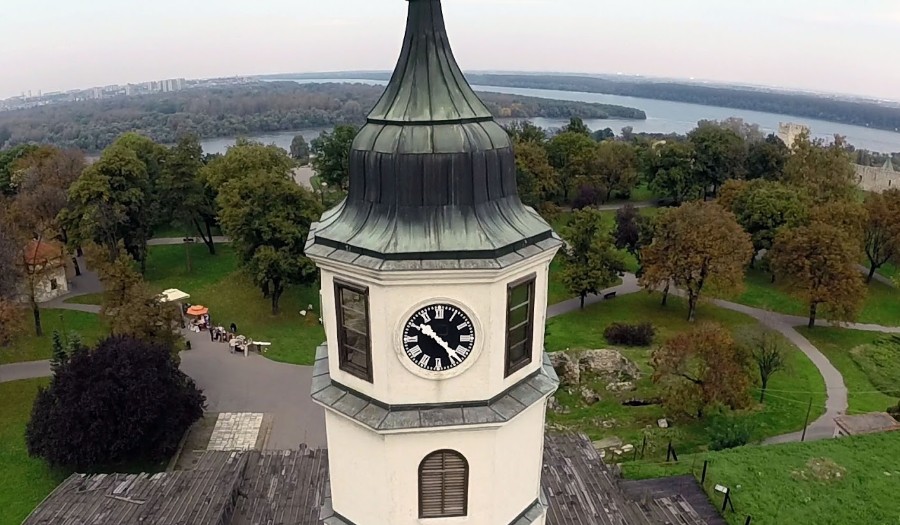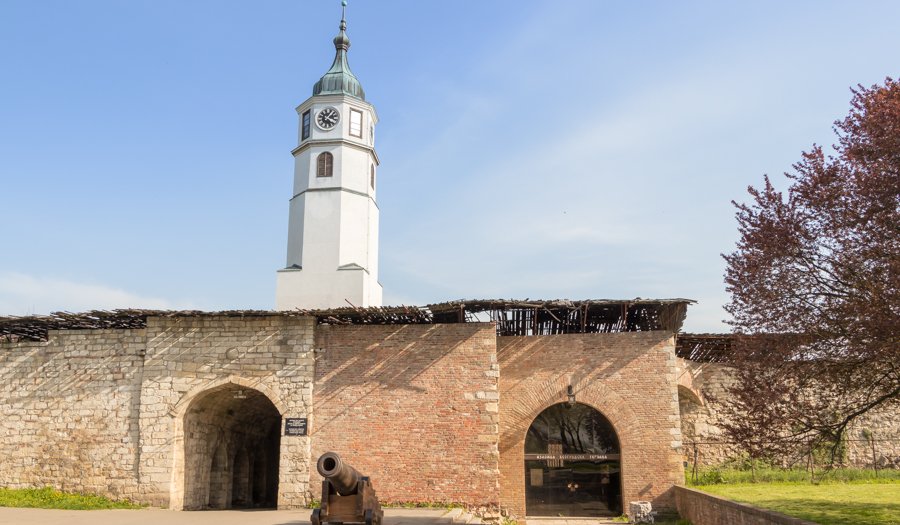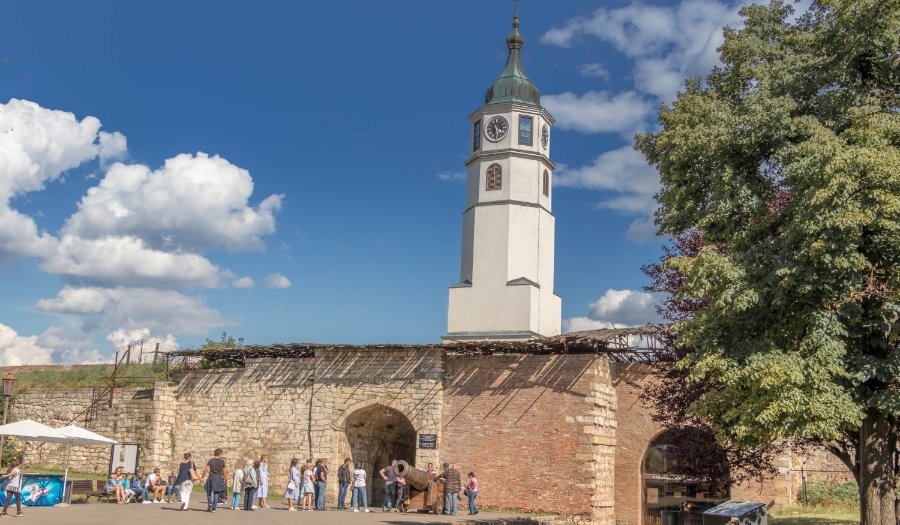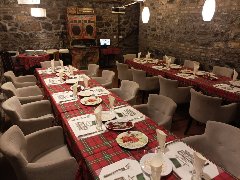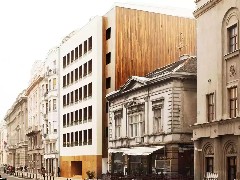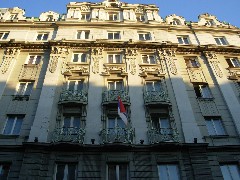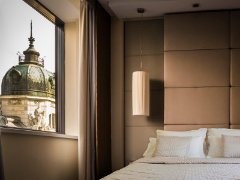OPEN NOW
Sahat Tower, located above the gate which was named "Sahat Gate" after it, was built during the period between 1740 and 1789. The overall appearance of the tower, with prominent baroque elements, directly testifies to the time of its origin. The tower was renovated in the middle of the nineteenth century. The Sahat Tower is one of the few structures of the Belgrade Fortress that has not suffered significant damages, still preserving authentic architectural and stylistic features.
The octangular baroque tower, visible from every part of the park and tower, has a central clock mechanism and pendulums. The height of the tower (27.5 m) is enough for the clock to work for approximately a week before it is winded again. The ticking is sounded with gongs instead of bells, which is traditionally the case. The clock has two hammers: a smaller one which ticks once for the first quarter, twice for the second, three times for the third and four times for the fourth, while the bigger hammer ticks immediately after to mark the current hour.
At the end of the seventeenth century, Andera Cornaro, who was a Venetian constructor in Austrian and later on Turkish service, built today's Sahat Gate as a part of restoration works on south-east rampart. Sahat Gate has casemates for used for guards, weapons and other military material. The Belgrade Fortress Gallery is situated in the flanking roo.
Sahat Tower, located above the gate which was named "Sahat Gate" after it, was built during the period between 1740 and 1789. The overall appearance of the tower, with prominent baroque elements, directly testifies to the time of its origin. The tower was renovated in the middle of the nineteenth century. The Sahat Tower is one of the few structures of the Belgrade Fortress that has not suffered significant damages, still preserving authentic architectural and stylistic features.
The octangular baroque tower, visible from every part of the park and tower, has a central clock mechanism and pendulums. The height of the tower (27.5 m) is enough for the clock to work for approximately a week before it is winded again. The ticking is sounded with gongs instead of bells, which is traditionally the case. The clock has two hammers: a smaller one which ticks once for the first quarter, twice for the second, three times for the third and four times for the fourth, while the bigger hammer ticks immediately after to mark the current hour.
At the end of the seventeenth century, Andera Cornaro, who was a Venetian constructor in Austrian and later on Turkish service, built today's Sahat Gate as a part of restoration works on south-east rampart. Sahat Gate has casemates for used for guards, weapons and other military material. The Belgrade Fortress Gallery is situated in the flanking roo.
